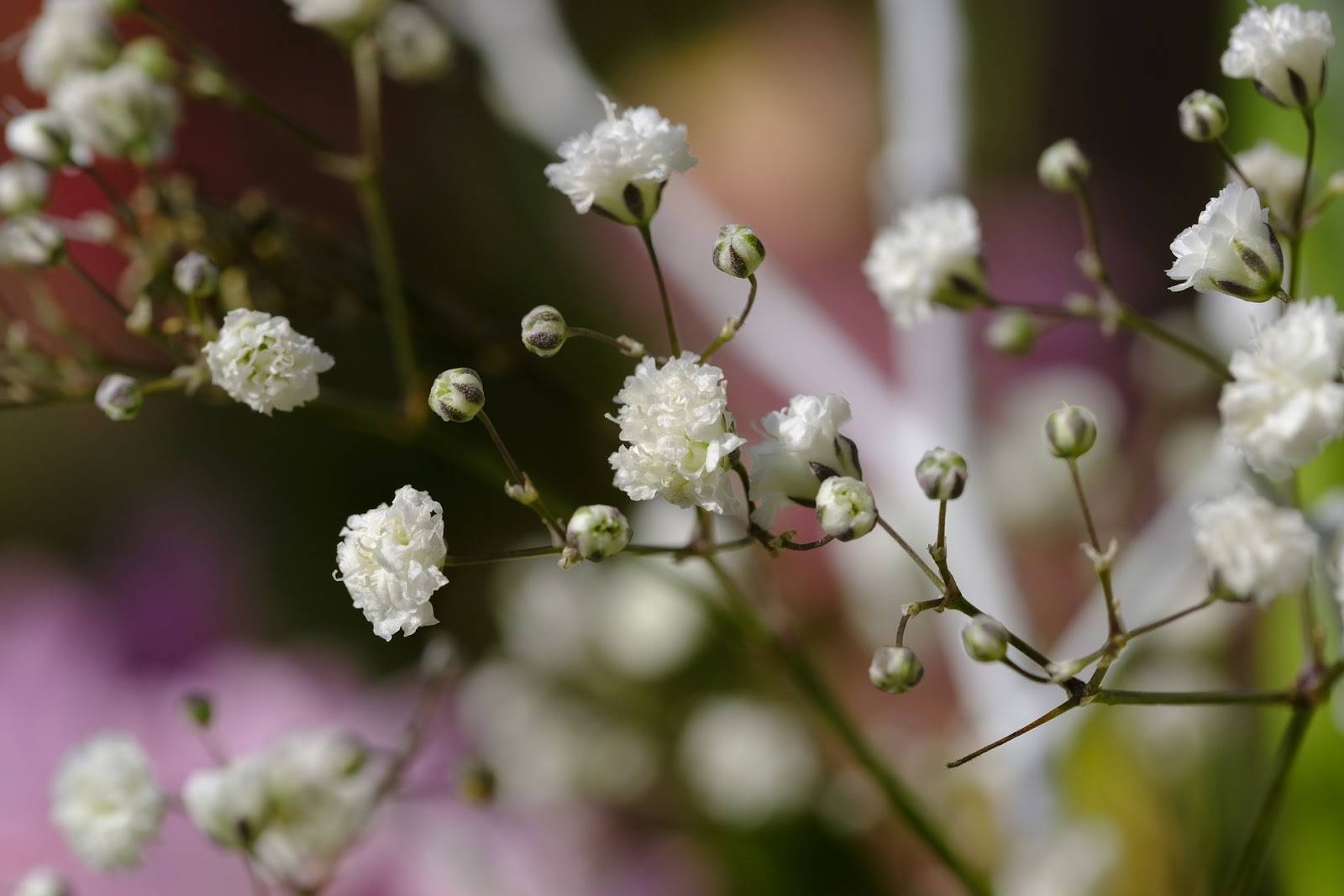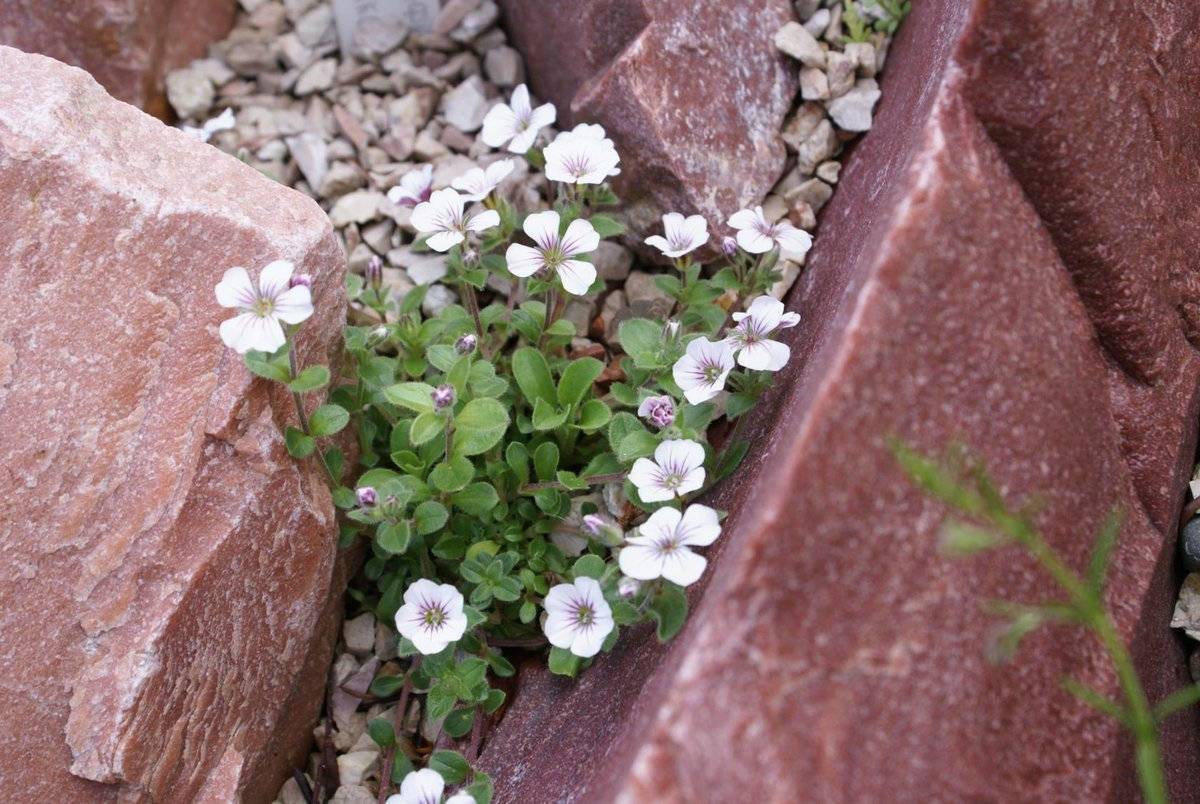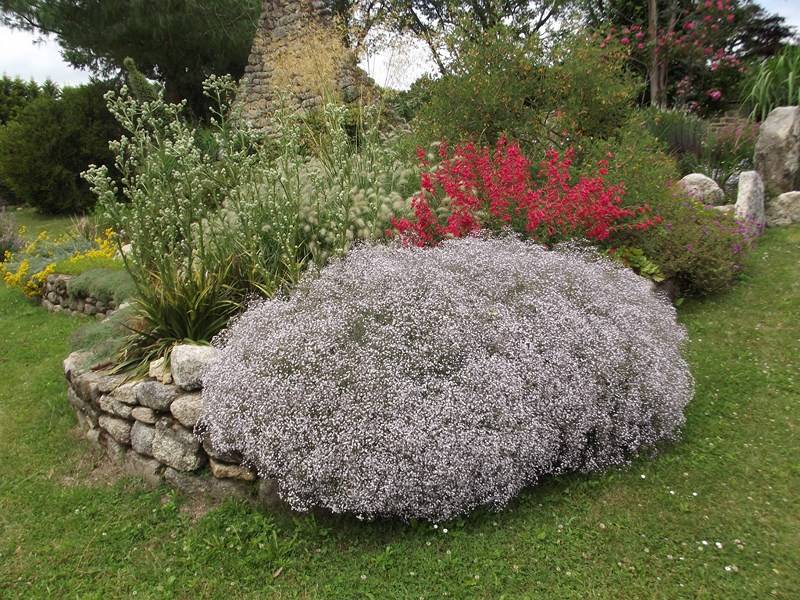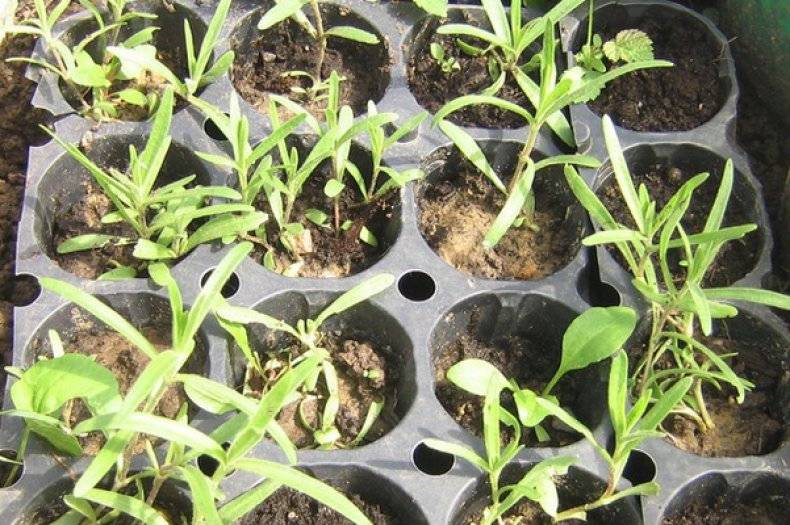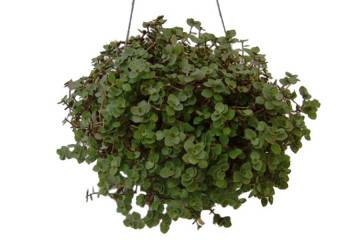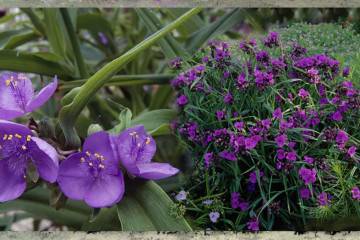Gypsophila perennial: creeping, graceful
Content:
Gypsophila has other names: swing, tumbleweed, gypsum. In England, the name "baby's breath" - "baby's breath" stuck to him, and in Germany it is called "the bride's veil." A beautiful plant is used to decorate alpine hills, and is also harvested for floristic compositions and dried for winter bouquets.
Description of the plant
Perennial gypsophila belongs to the numerous family of cloves (Caryophyllacea). There are annual and perennial grasses, as well as shrubs. In the wild, forms dense cushions consisting of tough and woody stems and branches.
The leaves are only whole and have a simple shape: lanceolate, spatulate, linear. In different species, the stems are more or less branched, but always formed from double forks. The root is very powerful - it can go 70 cm or even more deep.
Gypsophila has a typical carnation flower shape: small in diameter, growing on the tips of numerous shoots, single. Shades of petals: pink, white, white-green, blue, lilac. The calyx looks like a tiny five-petal or double bell, each petal of which is narrowed at the base.
From withered flowers, polyspermous capsules of round or ovoid shape are formed. They open after ripening with four valves, behind which small round brown seeds hide.
Perennial gypsophila: varieties and varieties
In total, kachim has about 150 species. Some of them were introduced into horticultural culture for their unpretentiousness and attractive flowering, including the annual gypsophila. In different regions of Eurasia, more than 30 wild-growing varieties are found, most often growing in Central Asia and the Caucasus.
Gypsophila graceful (Gypsophila elegans)
The species is native to the Caucasus, grown in an annual culture. Bushes from 20 to 50 cm tall.
The leaves are narrow green, the flowers are white or pink-red on thin and long pedicels, like smoke hovering over the crown. Easily tolerates partial shade and drought.
Bloom lasts from June to August.
Gypsophila paniculata (Gypsophila paniculata)
One of the tallest varieties - from 40 to 120 cm in height, is used to decorate the lower tier of rockeries.
The perennial forms a large globular bush densely dotted with flowers. In one place it can grow up to 10 years (frost resistance up to -34 ° C). Corollas are five-petal and double, white and ruddy pinkish. Pink gypsophila prefers keeping temperatures in the range of + 18-25 ° C during the summer.
Gypsophila creeping (Gypsophila muralis)
The popular name of the plant is the wall or creeping sand lover. More often grown in an annual culture, less often in a two-year culture. Prefers bare sands and wastelands with extremely poor soil, it is used to decorate a wall hanging composition.
Gypsophila creeping pink forms only one, but highly branched stem, which spreads along the ground. Height 20-40 cm.Flowers 3-6 mm in diameter. The petals are pink or white. In floriculture, since 1774, white gypsophila has been used as an extremely unpretentious border plant that does not need any care, including a very drought-resistant one.
Gypsophila pacifica
The species is native to the Far East and China. The height of the bushes reaches 1 m. It is appreciated for its lush flowering. The diameter of the corollas can reach 8 cm, which is not typical for other types of gypsophila. Perennial can withstand frosts down to -40 ° C. Prefers sandy loam, lime-rich soils.
Terry gypsophila blooms from August to September, the petals have a light pink color.
Gypsophila cerastoides
A creeping and very hygrophilous low-growing plant up to 10 cm high forms a mound up to 60 cm in diameter. It blooms in white or purple flowers with burgundy veins up to 2 cm in diameter. The leaves are small - up to 15 mm in length.
Flowering lasts from early May to late June. Frost resistance up to -34 ° С. Prefers sandy loam, lime-rich soils.
Collecting flowers for bouquets
Gypsophila is a flower ideal for any compositions, which florists have been successfully using for centuries.
The beauty of it is that the cut twig does not need water. Over time, it just dries out, but does not rot.
Having cut the flowers of gypsophila at the peak of their blooming, you can then put it in any vase in the house. They will remain as beautiful until next summer. Florists know how to get a dyed shoot for vibrant compositions.
Application in landscape design
The crown of most species is formed in the form of a compact ball or hemisphere.
A very decorative plant with bluish-gray and silvery-green foliage, blooming with pink or boiling white flowers. It looks extremely elegant surrounded by lush green lawns.
Gypsophila, which practically does not need watering, looks wonderful in rockeries and alpine slides. Good neighbors for her are verbena, phlox, roses, marigolds, yarrow, escholzia.
How to plant gypsophila
Before planting a plant, you need to know all the details of planting.
Soil requirements and preparatory work
The requirements for the composition of the soil for all varieties of gypsophila are similar and quite specific:
- there should be no clay;
- the soil is light, moisture-permeable;
- acidity level - neutral (pH = 5.5-6.7);
- the presence of a large amount of lime is mandatory, in the quality of which shell rock is mixed;
- humus is introduced for replanting, but in small quantities.
Preparing a site for planting consists in digging it up and thoroughly loosening it. In the process, the roots of perennial weeds are carefully removed. At an early stage, seedlings cannot withstand most of them, which inhibits flower development.
Growing from seeds
The seed remains germinating for 2-3 years. Gypsophila can be grown in containers for seedlings or immediately sown in open ground. Sowing in flower beds is carried out in the spring in the second half of April or in October before winter. Close up is not deep - 1.5 cm is enough. If the spring is protracted, then the planting is covered with a film on top.
Sowing on windowsills in containers and pots is carried out in the spring in order to get strong seedlings by May. Seedlings usually appear 10-11 days after sowing.
In phase 2 of these leaves, a pick is made. They are planted in cups with a diameter of 8 cm, or in containers, leaving 15 cm for each plant. As soon as the plants grow 20 cm high, they pinch the top of their head to form a voluminous bush.
Seedlings are planted in open ground after a preliminary week of hardening of the seedlings, when the night air temperature is above + 10 ° C.
Reproduction of gypsophila perennial cuttings
Having a perennial bush of varietal white or colored gypsophila in the garden, it can be used for propagation by cuttings.
First, containers for rooting are prepared, into which fertile soil is poured, mixed with sand for looseness and a small amount of pebbles, lime. Cuttings 5-8 cm long are cut from the shoots without flowers. They are buried 1 cm into the soil and must be covered with a greenhouse on top.
Containers with cuttings are placed under bright, but diffused light. The roots should appear after 2 weeks, and the whole process of forming a seedling ready for transplanting takes about 35 days.
Rooted cuttings of perennial gypsophila are planted in a permanent place at the end of summer. The optimal distance between them is 30-50 cm, depending on the variety and size of an adult plant.
Dates of landing in open ground
The optimal time depends on the region and the type of planting material:
- Seedlings - in May, when the air and soil warms up above + 10 ° C.
- Rooted cuttings are planted in the summer in the second half, when a full-fledged root ball is formed.
Gypsophila perennial: planting and care in the country
When choosing a place for a perennial flower, it should be borne in mind that he really does not like transplants. The fact is that the root is stretched to a great depth - up to 70 cm or more. Damage to its tip is extremely painful for the plant.
If the soil is poor in lime, then it will be necessary to pour crushed chalk or dolomite flour into it several times.
Flower cloud watering rules
Regular watering will be required for seedlings in the first few weeks after planting in open ground, as well as those seedlings that appear after spring or winter sowing in a flower garden.
In the hottest season, it is sufficient to do standard watering twice a week. If it rains regularly, then artificial irrigation is not required.
Drought for many varieties is not an obstacle to full development, especially for creeping ones. And yet, as gardeners note, full watering helps to get plants of higher decorativeness.
Swamping is just as bad as a high level of groundwater occurrence, because of this, it is worth choosing a place for planting on a small hill or on a slope.
Top dressing
Gypsophila, according to the assurances of experienced flower growers, pleases with abundant flowering and without fertilizing, especially if a site is chosen for planting seedlings where flowers were planted a year earlier and the soil was fertilized. But for perennial varieties, especially double ones, top dressing is a prerequisite for laying numerous healthy buds.
The maximum attention is paid to potash fertilizers. They are brought in at intervals of 3 weeks, 50 g per 1 m². Before planting seedlings, the soil is fertilized with compost.
Wintering
With the arrival of winter, the ground part of the perennial gypsophila must be carefully cut with a pruner at the root.
In snowy winters, the flower does not need any special shelter. In regions where there is a risk of lack of snow in frosts, it is worth covering the place of gypsophila growth with a pillow of fallen leaves, needles, sawdust or other mulching material in the fall, after cutting off the ground part.
Major pests and ailments
Gardeners are also very fond of gypsophila because it is very little susceptible to pest invasions and is rarely affected by diseases.
As a preventive measure, rooted seedlings are treated with copper sulfate or Bordeaux liquid against rust, smut and gray rot. If this did not help and traces of diseases appear, then the diseased branches are removed and burned, and the planting is sprayed with a solution of Topaz or Fundazol.
Gall nematodes and cyst-forming ones pose a threat to the plant. These insects suck the juice out of the roots. Signs: yellowing of leaves and shoots, gradual drying of the entire flower. Such pests can be defeated with Bi-58, Rogor, Tiazon preparations.
Anyone can decorate a flower garden in a garden or an alpine hill with a noble and gentle gypsophila - the plant feels great in the vast majority of Russian regions, except for the Far North. It's easy to look after him. The newest varieties - with large and double flowers - deserve special attention.


